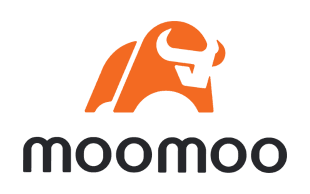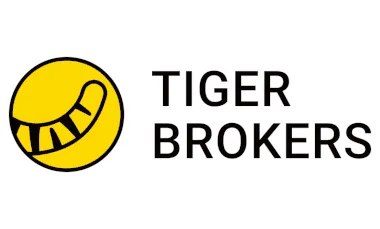Our top pick for
24/5 trading

Chevron Corp (CVX) is a leading oil & gas integrated business with stocks listed in the US. It closed the previous market day at US$135.5. During the previous open market day, the price has varied from a low of USD135.18 to a high of USD137. Chevron is listed on the NYSE. All prices are listed in US Dollars.
Our top pick for
24/5 trading

Our top pick for
Copy trading

Our top pick for
Mobile app

Chevron's shares were split on a 2:1 basis on 12 September 2004. So if you had owned 1 share the day before the split, the next day you would own 2 shares. This wouldn't directly have changed the overall worth of your Chevron shares – just the quantity. However, indirectly, the new 50% lower share price could have impacted the market appetite for Chevron shares which in turn could have impacted Chevron's share price.
| 52-week range | US$132.04 - US$168.96 |
|---|---|
| 50-day moving average | US$151.6408 |
| 200-day moving average | US$151.4477 |
| Target price | US$167.9262 |
| PE ratio | 14.033 |
| Dividend yield | US$6.52 (5.03%) |
| Earnings per share (TTM) | US$9.71 |
Use the fields above to explore the returns from a historical investment. Please refer to the charts further up this page to see performance over 5 years, or other periods. Past performance doesn't indicate future results. Capital is at risk.
Historical closes compared with the last close of $135.5
| 1 week (2025-04-30) | -0.41% |
|---|---|
| 1 month (2025-04-07) | -3.32% |
| 3 months (2025-02-07) | -11.22% |
| 6 months (2024-11-08) | -13.66% |
| 1 year (2024-05-08) | -16.64% |
|---|---|
| 2 years (2023-05-08) | -15.09% |
| 3 years (2022-05-06) | -20.62% |
| 5 years (2020-05-07) | 46.27% |
We currently don't have that product, but here are others to consider:
How we picked theseThe technical analysis gauge below displays real-time ratings for the timeframes you select. However, this is not a recommendation. It represents a technical analysis based on the most popular technical indicators: Moving Averages, Oscillators and Pivots. Finder might not concur and takes no responsibility.
Valuing Chevron stock is incredibly difficult, and any metric has to be viewed as part of a bigger picture of Chevron's overall performance. However, analysts commonly use some key metrics to help gauge the value of a stock.
Chevron's current share price divided by its per-share earnings (EPS) over a 12-month period gives a "trailing price/earnings ratio" of roughly 14x. In other words, Chevron shares trade at around 14x recent earnings.
That's relatively low compared to, say, the trailing 12-month P/E ratio for the NASDAQ 100 at the end of 2019 (27.29). The low P/E ratio could mean that investors are pessimistic about the outlook for the shares or simply that they're under-valued.
Chevron's "price/earnings-to-growth ratio" can be calculated by dividing its P/E ratio by its growth – to give 3.5546. A low ratio can be interpreted as meaning the shares offer better value, while a higher ratio can be interpreted as meaning the shares offer worse value.
The PEG ratio provides a broader view than just the P/E ratio, as it gives more insight into Chevron's future profitability. By accounting for growth, it could also help you if you're comparing the share prices of multiple high-growth companies.
Chevron's EBITDA (earnings before interest, taxes, depreciation and amortisation) is US$40.1 billion (£31.6 billion).
The EBITDA is a measure of a Chevron's overall financial performance and is widely used to measure stock profitability.
Over the last 12 months, Chevron's shares have ranged in value from as little as US$132.04 up to US$168.96. A popular way to gauge a stock's volatility is its "beta".
Beta measures a share's volatility in relation to the market. The market (NYSE average) beta is 1, while Chevron's is 0.913. This would suggest that Chevron's shares are less volatile than average (for this exchange).
| Revenue TTM | US$195.6 billion |
|---|---|
| Operating margin TTM | 11.39% |
| Gross profit TTM | US$77.3 billion |
| Return on assets TTM | 5.62% |
| Return on equity TTM | 11.27% |
| Profit margin | 9.03% |
| Book value | 86.103 |
| Market capitalisation | US$238 billion |
| EBITDA | US$40.1 billion |
TTM: trailing 12 months
Dividend payout ratio: 92.7% of net profits
Recently Chevron has paid out, on average, around 92.7% of net profits as dividends. That has enabled analysts to estimate a "forward annual dividend yield" of 5.03% of the current stock value. This means that over a year, based on recent payouts (which are sadly no guarantee of future payouts), Chevron shareholders could enjoy a 5.03% return on their shares, in the form of dividend payments. In Chevron's case, that would currently equate to about $6.52 per share.
Chevron's payout ratio would broadly be considered high, and as such this stock could appeal to those looking to generate an income. Bear in mind however that companies should normally also look to re-invest a decent amount of net profits to ensure future growth.
Chevron's most recent dividend payout was on 9 March 2025. The latest dividend was paid out to all shareholders who bought their shares by 13 February 2025 (the "ex-dividend date").
Environmental, social and governance (known as ESG) criteria are a set of three factors used to measure the sustainability and social impact of companies like Chevron.
When it comes to ESG scores, lower is better, and lower scores are generally associated with lower risk for would-be investors.
Total ESG risk: 43.79
Socially conscious investors use ESG scores to screen how an investment aligns with their worldview, and Chevron's overall score of 43.79 (as at 12/31/2018) is pretty weak – landing it in it in the 91st percentile of companies rated in the same sector.
ESG scores are increasingly used to estimate the level of risk a company like Chevron is exposed to within the areas of "environmental" (carbon footprint, resource use etc.), "social" (health and safety, human rights etc.), and "governance" (anti-corruption, tax transparency etc.).
Environmental score: 24.34/100
Chevron's environmental score of 24.34 puts it squarely in the 8th percentile of companies rated in the same sector. This could suggest that Chevron is a leader in its sector terms of its environmental impact, and exposed to a lower level of risk.
Social score: 15.98/100
Chevron's social score of 15.98 puts it squarely in the 8th percentile of companies rated in the same sector. This could suggest that Chevron is a leader in its sector when it comes to taking good care of its workforce and the communities it impacts.
Governance score: 13.98/100
Chevron's governance score puts it squarely in the 8th percentile of companies rated in the same sector. That could suggest that Chevron is a leader in its sector when it comes to responsible management and strategy, and exposed to a lower level of risk.
Controversy score: 3/5
ESG scores also evaluate any incidences of controversy that a company has been involved in. Chevron scored a 3 out of 5 for controversy – a middle-of-the-table result reflecting that Chevron hasn't always managed to keep its nose clean.
Chevron Corp was last rated for ESG on: 2019-01-01.
| Total ESG score | 43.79 |
|---|---|
| Total ESG percentile | 91.1 |
| Environmental score | 24.34 |
| Environmental score percentile | 8 |
| Social score | 15.98 |
| Social score percentile | 8 |
| Governance score | 13.98 |
| Governance score percentile | 8 |
| Level of controversy | 3 |
Chevron Corporation, through its subsidiaries, engages in the integrated energy and chemicals operations in the United States and internationally. The company operates in two segments, Upstream and Downstream. The Upstream segment engages in the exploration, development, production, and transportation of crude oil and natural gas; liquefaction, transportation, and regasification of liquefied natural gas; transporting crude oil through pipelines; processing, transporting, storage, and marketing of natural gas; and carbon capture and storage, as well as a gas-to-liquids plant. The Downstream segment refines crude oil into petroleum products; markets crude oil, refined products, and lubricants; manufactures and markets renewable fuels; transports crude oil and refined products through pipeline, marine vessel, motor equipment, and rail car; and manufactures and markets commodity petrochemicals, plastics for industrial uses, and fuel and lubricant additives. The company was formerly known as ChevronTexaco Corporation and changed its name to Chevron Corporation in 2005. Chevron Corporation was founded in 1879 and is headquartered in Houston, Texas.
We used Finder's proprietary algorithm to find the 10 best stocks under $10 on the ASX.
We used Finder's proprietary algorithm to find Australian-listed companies that have strong fundamentals and have a share price under $5.
Top gainers included Boss Energy, Fineos Corporation Holdings and Cedar Woods Properties.
You often hear people talk about whether the ASX200 is up, down or flat. So, why is it such a big deal?
Find out the different ways you can invest in the S&P 500 index from Australia.
Following a couple of lean years for dividend investors, here are 10 ideas you could consider in your portfolio.
Find out how you can invest in Nasdaq and compare a range of leading brokers that let you invest in US stocks cheaply and quickly.
Find cheap stock brokerage in Australia when buying and selling shares on the ASX and other international exchanges.
Bell Direct offers one-second placement guarantees for trades, so you can take advantage of all trading opportunities at the price you want.
Follow these tips to find the best share trading platform for you.